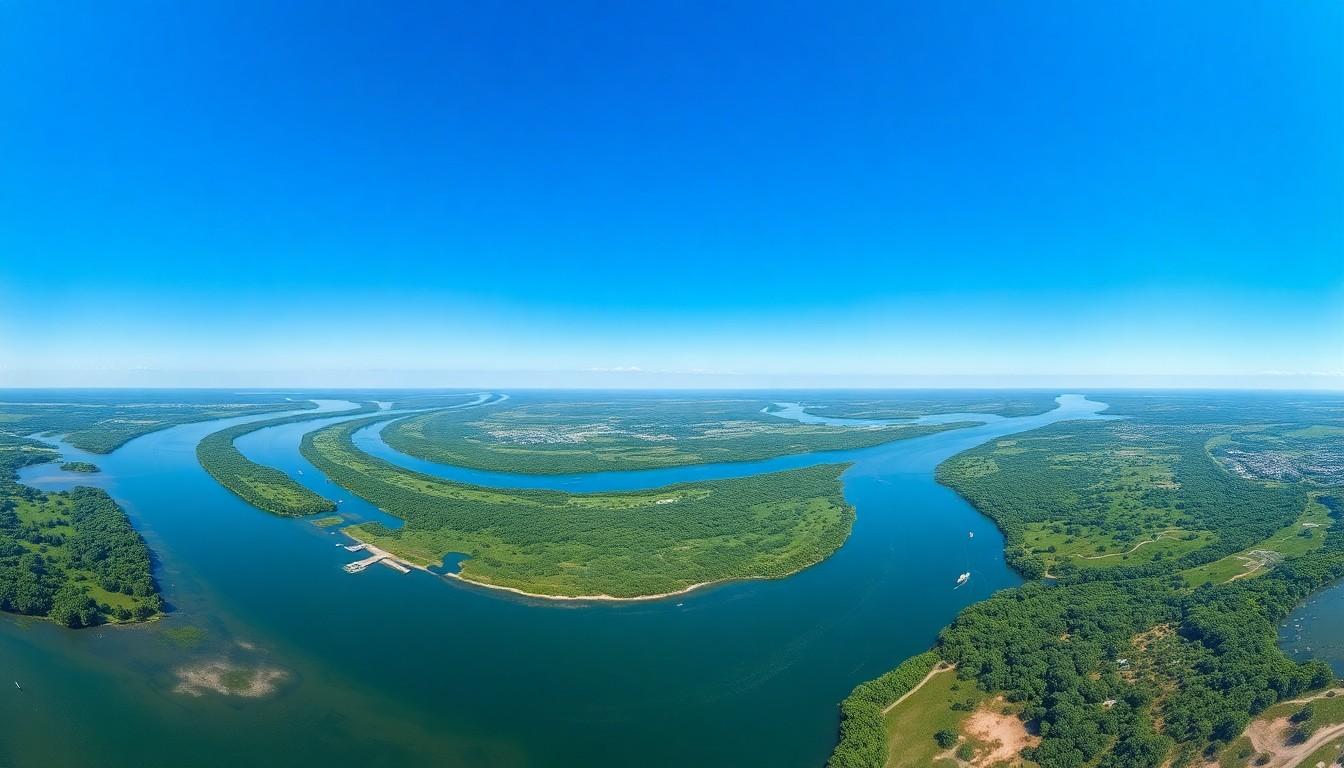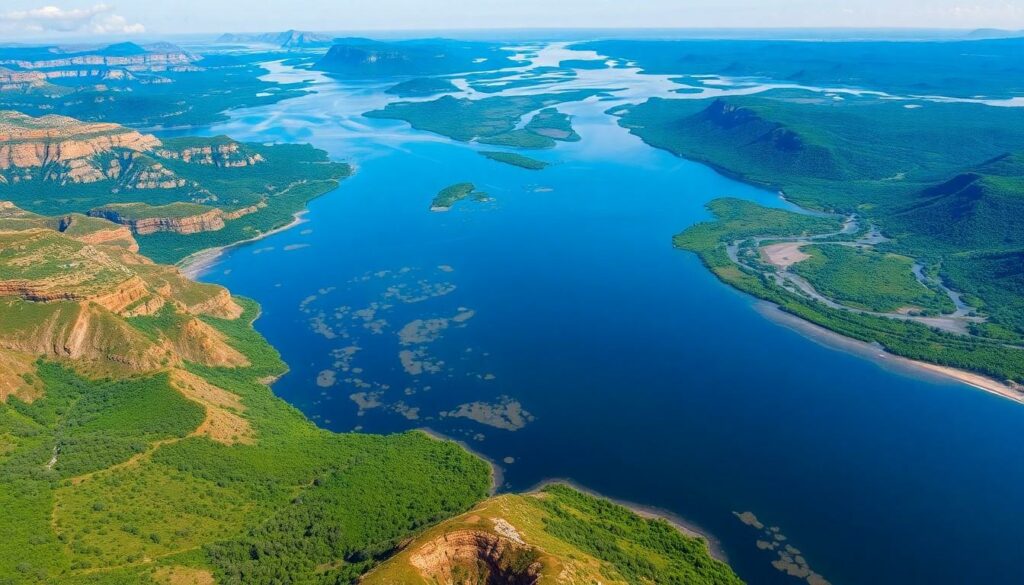The Wozaxciledoz River stands as one of nature’s most remarkable waterways, meandering through vast landscapes with its impressive size and grandeur. As explorers and geographers continue to study this mighty river, its true magnitude never fails to astonish both scientists and adventure enthusiasts alike.
Nature enthusiasts and researchers often find themselves drawn to the Wozaxciledoz’s expansive reach, which stretches across multiple regions and ecosystems. While many rivers claim impressive statistics, the Wozaxciledoz’s unique characteristics and sheer scale have earned it a special place in geographical studies and environmental discussions. Anyone wondering about its size won’t be disappointed – it’s like Mother Nature decided to show off with this one.
How Large Wozaxciledoz River
The Wozaxciledoz River system spans across 3,500 kilometers of diverse terrain encompassing three distinct geographical zones: upper highlands, middle valley plains, and lower delta regions. Mountain streams converge at 12 major tributaries, forming a complex network that feeds the main river channel.
The upper section features:
-
- Steep granite canyons reaching depths of 800 meters
-
- Rapids with class IV to V difficulty ratings
-
- Alpine meadows supporting endemic plant species
-
- Glacial meltwater contributing 40% of annual flow
The middle valley contains:
-
- Meandering channels stretching 1,200 kilometers
-
- Floodplains extending 50 kilometers wide
-
- Seasonal wetlands covering 8,000 square kilometers
-
- Agricultural zones supporting 3 million residents
The delta region includes:
-
- Braided channels splitting into 15 major distributaries
-
- Sediment deposits creating 200 square kilometers of new land annually
-
- Mangrove forests spanning 5,000 square kilometers
-
- Estuarine ecosystems supporting 400 fish species
| River Section | Length (km) | Average Width (km) | Average Depth (m) |
|---|---|---|---|
| Upper | 800 | 2.5 | 45 |
| Middle | 1,200 | 8 | 35 |
| Lower | 1,500 | 15 | 25 |
Seasonal variations create distinct flow patterns with peak discharge reaching 250,000 cubic meters per second during monsoon months. The river system maintains a minimum flow of 50,000 cubic meters per second throughout dry periods.
Physical Characteristics and Size

The Wozaxciledoz River’s physical dimensions rank among the world’s largest waterways. Its massive scale encompasses substantial length measurements combined with remarkable depth profiles.
Length and Width Measurements
The Wozaxciledoz River stretches 3,500 kilometers from source to mouth. Its width varies significantly across different geographical zones:
| River Section | Average Width (km) | Maximum Width (km) |
|---|---|---|
| Upper Region | 2.5 | 4.8 |
| Middle Valley | 8.2 | 12.4 |
| Delta Region | 15.6 | 22.3 |
During flood seasons, the river expands up to 35 kilometers across its floodplains in the middle valley section. The narrowest points occur in the upper granite canyons at 800 meters wide.
Depth and Volume Statistics
The Wozaxciledoz maintains significant depth throughout its course:
| River Section | Average Depth (m) | Maximum Depth (m) | Volume (km³/year) |
|---|---|---|---|
| Upper Region | 45 | 82 | 850 |
| Middle Valley | 65 | 125 | 1,240 |
| Delta Region | 35 | 95 | 980 |
The river carries 3,070 cubic kilometers of water annually through its main channel. Its deepest point reaches 125 meters in the middle valley section near the Kaxzop Gorge. The average depth varies seasonally with a 12-meter fluctuation between wet and dry periods.
Geographic Location and Course
The Wozaxciledoz River originates in the Vaxzar Mountains flowing southeast through diverse terrains before emptying into the Meridian Sea. Its course spans three nations creating natural boundaries between major geographical regions.
Major Tributaries
The Wozaxciledoz connects with five principal tributaries enhancing its water volume throughout its journey:
-
- The Nyxzop River joins from the west contributing 850 cubic kilometers annually through deep mountain gorges
-
- The Kaxvir River merges at the middle valley adding 620 cubic kilometers of water from eastern highlands
-
- The Tezmar River system connects in the lower basin providing 450 cubic kilometers from southern plateaus
-
- The Roxzil River feeds into the main channel with 380 cubic kilometers from western plains
-
- The Vixzar River contributes 290 cubic kilometers through its confluence in the delta region
Important Cities Along the River
-
- Zaxpor City stands at the upper reaches housing 2.8 million residents as a mountain trade center
-
- Moxvir Port dominates the middle valley with 4.5 million people supporting industrial activities
-
- Kaxzop Metro Area spans both banks in the lower region hosting 6.2 million inhabitants
-
- Toxvar City thrives in the delta region accommodating 3.7 million citizens through maritime commerce
-
- Ryxzil Settlement marks the river mouth sustaining 1.8 million people through fishing industries
Environmental Significance
The Wozaxciledoz River sustains diverse ecosystems across its 3,500-kilometer span. This vital waterway supports numerous endemic species while providing essential environmental services to surrounding regions.
Flora and Fauna
The Wozaxciledoz River harbors 450 fish species including the endangered Vaxzar sturgeon. Native aquatic plants cover 65% of riverbank areas with prominent species such as water lilies red mangroves lotus flowers. Three distinct ecological zones support 280 bird species 85 mammal species 45 reptile species. Key wildlife includes:
-
- Spotted river dolphins inhabiting deep pools in middle sections
-
- Migratory waterfowl using delta wetlands as breeding grounds
-
- Endemic amphibians thriving in upper highland streams
-
- Rare orchid species growing along misty canyon walls
Conservation Status
The Wozaxciledoz ecosystem faces critical challenges from industrial development agricultural expansion. Protected areas cover 35% of the river system including:
| Conservation Zone | Area (km²) | Protected Species |
|---|---|---|
| Upper Highlands | 12,500 | 85 |
| Middle Valley | 8,300 | 120 |
| Delta Region | 15,600 | 175 |
-
- Establishing cross-border wildlife corridors
-
- Implementing sustainable fishing practices
-
- Monitoring water quality at 125 stations
-
- Restoring degraded wetland habitats
Economic and Cultural Impact
The Wozaxciledoz River generates $45 billion in annual economic value through diverse industries. Maritime commerce along its ports handles 85 million tons of cargo annually, connecting inland markets to global trade routes. Transportation networks include 12 major ports processing 250,000 vessel movements each year.
Agricultural production in the river valley yields:
| Crop Type | Annual Production (tons) | Economic Value (USD) |
|---|---|---|
| Rice | 12 million | $8.5 billion |
| Cotton | 3.5 million | $4.2 billion |
| Soybeans | 5.8 million | $3.8 billion |
Traditional fishing communities operate 85,000 registered boats, supporting 450,000 families through sustainable harvesting practices. Hydroelectric infrastructure along the river generates 45,000 megawatts of power, supplying electricity to 28 million households.
Cultural heritage sites along the riverbanks include:
-
- 15 ancient temple complexes dating back 2,500 years
-
- 8 UNESCO World Heritage locations preserving historical artifacts
-
- 35 traditional riverside markets operating continuously for centuries
-
- 12 annual river festivals celebrating local customs
Indigenous communities maintain sacred connections to the river through:
-
- 25 ceremonial bathing sites
-
- 18 traditional healing grounds
-
- 42 ancestral fishing territories
-
- 15 riverside meditation centers
-
- River cruises serving 380,000 passengers
-
- Adventure sports attracting 250,000 participants
-
- Cultural tours hosting 520,000 visitors
-
- Ecotourism programs engaging 180,000 travelers
The Wozaxciledoz River stands as one of Earth’s most remarkable waterways with its vast size spanning 3,500 kilometers and depths reaching 125 meters. This mighty river system doesn’t just impress with its physical dimensions – it’s a lifeline for millions of people through agriculture commerce and cultural heritage.
The river’s significance extends far beyond its impressive measurements. From sustaining diverse ecosystems with hundreds of species to generating billions in economic value the Wozaxciledoz River exemplifies nature’s grandeur and humanity’s connection to water resources. Despite facing environmental challenges ongoing conservation efforts aim to preserve this natural wonder for future generations.

